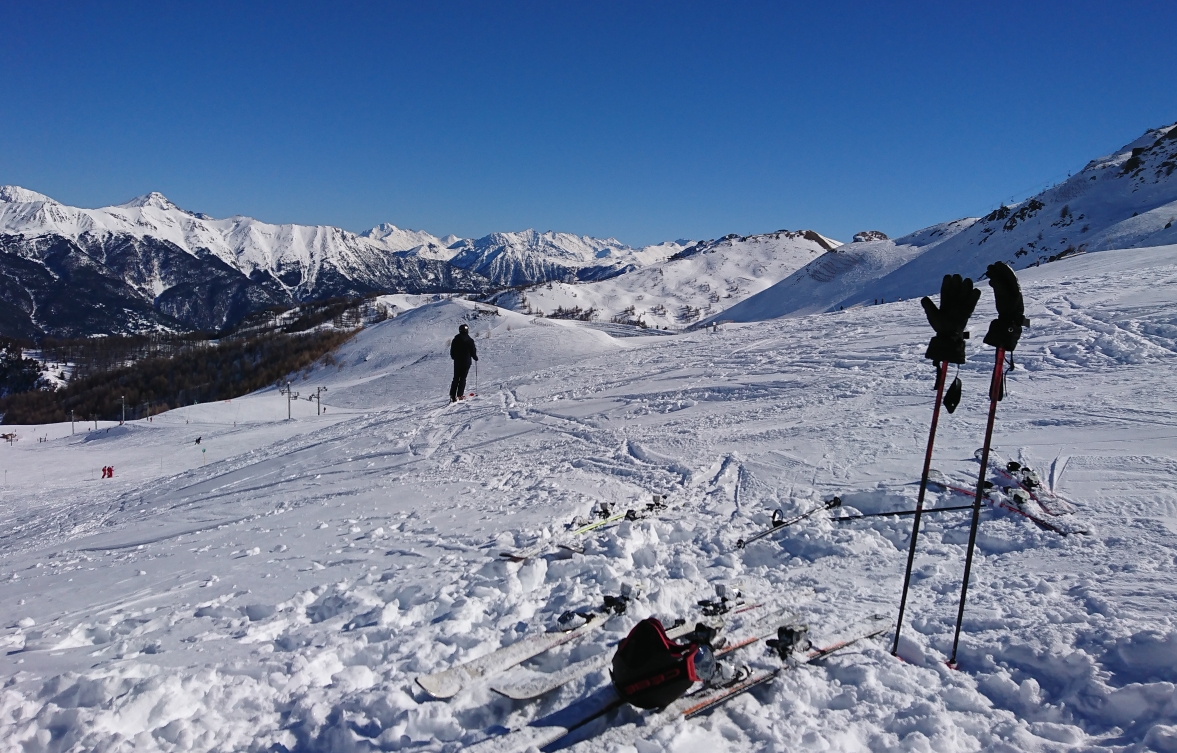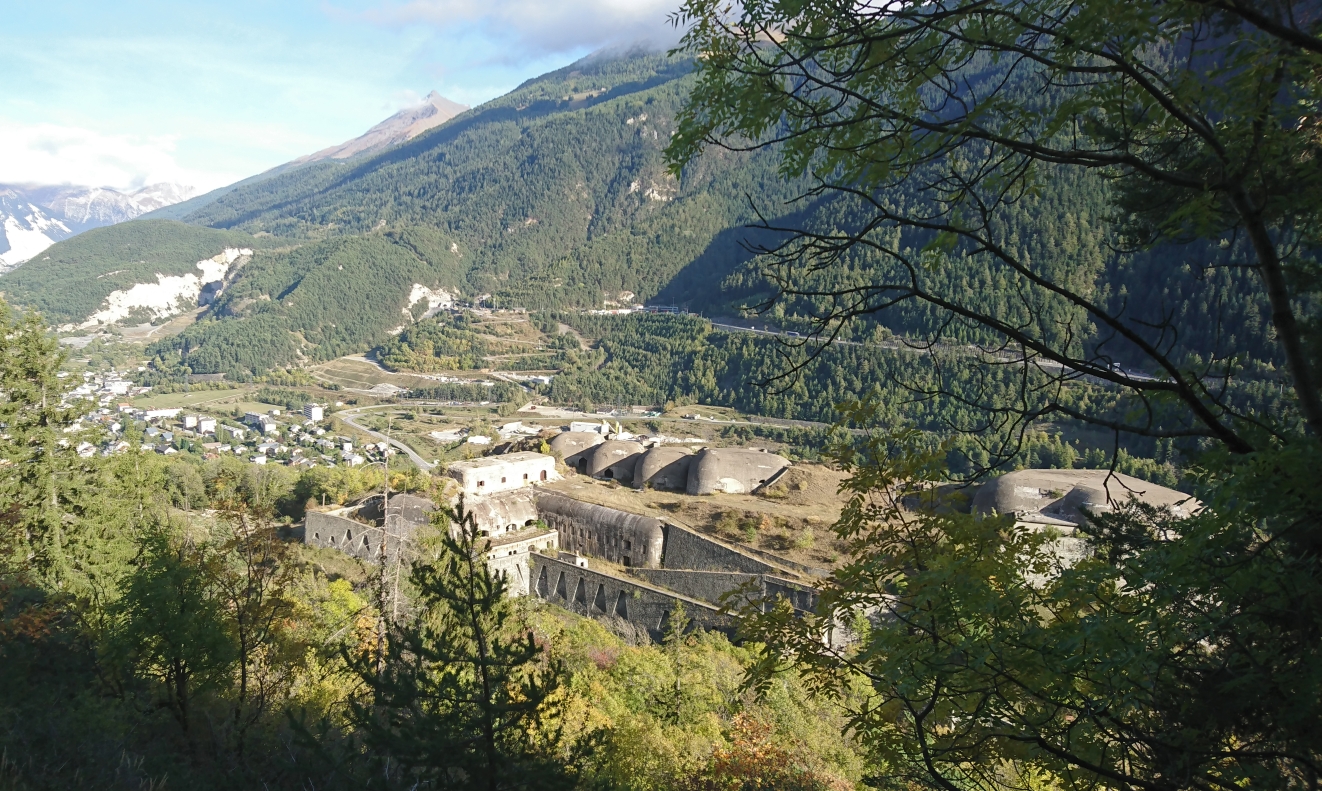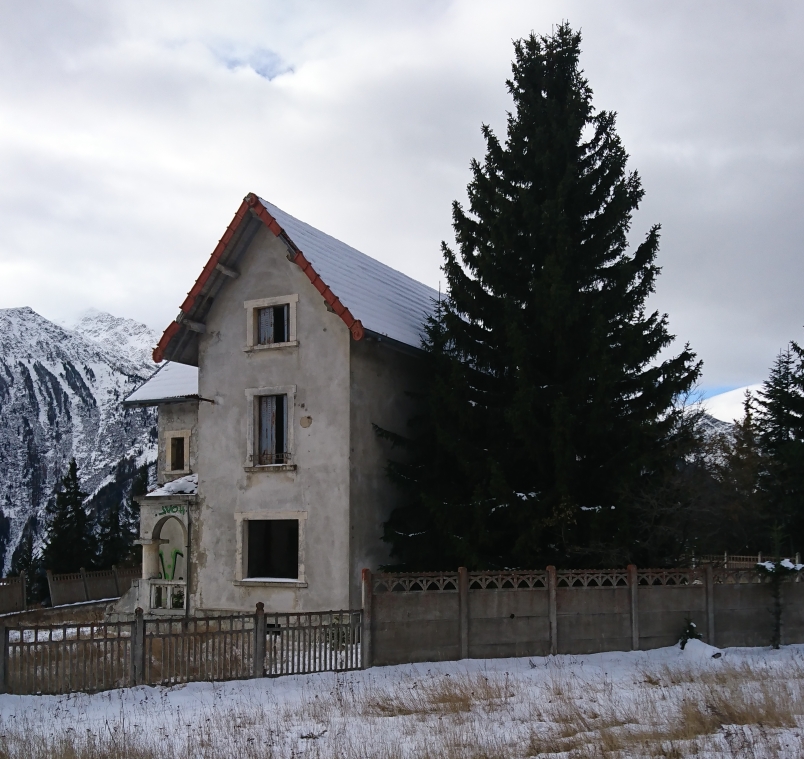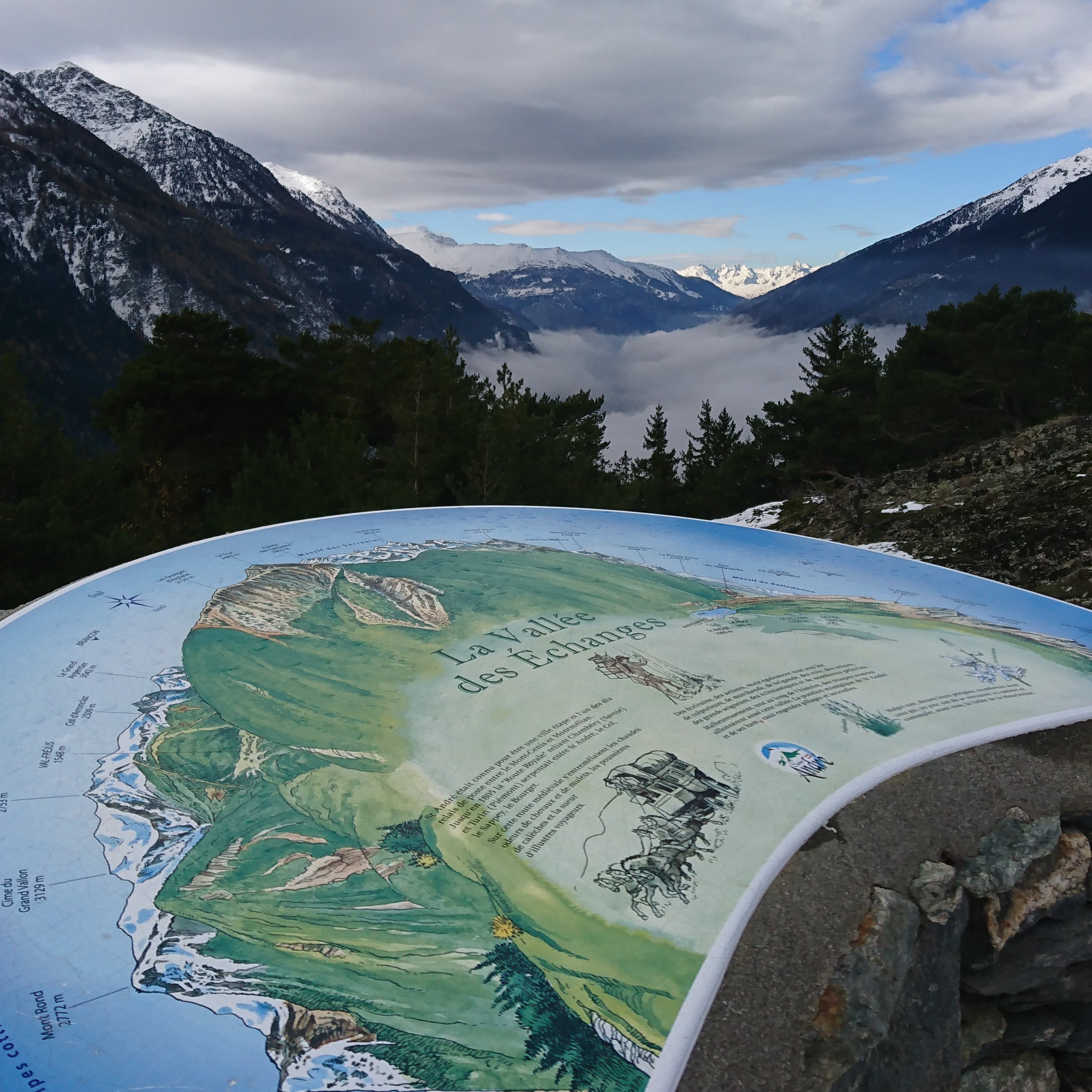My training for this year’s ski season has officially begun. Obviously, my personal requirements are not the same as a professional skier. I’m not hoping to stand on a podium, I simply want to get through my first day of skiing without my legs feeling like they’re on fire.
Is this article difficult to understand? Go to the adapted version!

In the beginning, I’m always very enthusiastic. When I’m washing dishes or working on the computer, I think about various exercises I can do to strengthen my legs. You know, there’s that one exercise where you sit against a wall like you’re in a chair, but you don’t actually have a chair? I made a bet with some of my friends to see who could stay the longest, but we never had a competition. We got busy with other things that were probably more important. Probably.
In reality, I have good intentions, but I never seem to stick to my plan. Every year my legs are killing me after my first day of skiing, and I swear I’m going to do some exercises to strengthen my legs so it won’t be so painful next time. Yep, this has happened every year for the last 15 years. You would think that I’ve learned my lesson, but no. Apparently, I like to torture myself.
This year, I’ve decided to do some trail running to get into shape. The idea is that if I increase the amount of elevation change, I’ll work my thighs more, and I’ll be in less pain when I ski. That is the theory. For this theory to work, however, I have to make an effort to train harder. My first training session was earlier this week.

I have a loop that I enjoy doing. The first couple of kilometers are flat and then it’s time to attack the uphill section. Unfortunately, in the beginning, I have to run on some concrete. I guess I shouldn’t complain, because I can leave directly from where I live. I don’t need to take a car to get started, and the majority of the loop is either made of dirt or rocks.

Once on the trail, it’s a slow incline until I reach the first fort. There are about 200 meters of elevation gain. After that, if I want to go up even higher, there is a path that goes up to another fort. I’ve only done this a couple of times, but I like the fact that there aren’t a lot of steep sections. All in all, it’s roughly 700 meters of elevation gain. It’s not steep all of the time, so I don’t notice it that much. This is my usual plan.
To make it more interesting (harder), it was decided to take another path up to the highest fort. The good news is that there are still only 700 meters of elevation gain. The bad news? Instead of taking 12 km to go roundtrip, it only takes 9 km. The first section was steep. When I say steep, it was STEEP!

The altitude where I live is approximately 1000 meters. Snow starts to accumulate at around 1250 meters. This means that soon after starting this steep section, there is snow. There were numerous sections that I had to walk instead of run. I also had to stop talking because it was so steep. Sometimes when I’d take a step up, I’d slide a little.
The fact that there was snow on the ground made it great for training! My body was working overtime trying to make sure I stayed stable as I made my way up the mountain. And my thighs? They were burning! I can imagine how much easier skiing will be, thanks to my new workout.
Since the trail was extremely steep, it didn’t take long to get to the top. And that, my friend, is where the fun began. Sometimes there were at least 20 centimeters of snow! There were footprints on a few paths. But, in other places, it was nothing but fresh powder.

The snow was deep, and my feet sank each time I took a step. My legs were working hard to make my way across the fields of snow. Luckily, my body was nice and warm. It didn’t bother me that my feet were getting wet. My shoes weren’t water-proof, but my biggest problem was all of the snow that fell into my shoes from the top.

After making it through the woods, I could see the fort. With the snow, it was so beautiful! It almost made me forget about the graffiti on the walls of the buildings. I want to come back when I can explore and take more pictures. It’s not easy to run, take pictures, and not fall!

Going down the mountain was so much fun! The first section was on a dirt road completely covered in snow. It took some time to practice “controlled falling” as I ran, but it felt good to let go and run as fast as my legs would let me. Of course, all good things must come to an end, and I reached parts of the trail that were a little bit more tricky.
Although there wasn’t any ice, there were rocky sections with patches of snow. The path was fairly narrow, but not dangerous. If I fell, I probably would have twisted an ankle or broken my wrist. At least I wouldn’t have fallen off the mountain to my death. That, of course, was comforting.

I made it down to the first fort, and I was able to run past the cows. I was really happy that they were all together, slightly lower than my path. I didn’t have to try to walk past them. I probably worry too much, but a cow is way bigger than I am, and I have no desire to have any problems!
At the end of my first training session, my legs were tired, but it was a good feeling. I could tell that I used my muscles more than usual. And actually, I can confirm that I used muscles that I hadn’t used in a very long time. So, all in all, I’m happy.
The weekend is just around the corner, and I need to think about what I’m going to do for my next training session. The weather doesn’t look very good, so I’m not sure it’s a good idea to run with a significant amount of elevation gain. We’ll see.
I’m hoping that I’ll stay motivated and continue to train, even if I have to exercise indoors. I want this year to be different from the last 15 years. This year, I want to have a great first day of skiing!
How do you get ready for the ski season? I’d love to have more ideas!
Adapted Version
In parenthesis () there are explanations of words and phrases. These explanations are in italics.
My First Pre-Season (Before the Season Starts) Ski Workout (Exercise)
My training (exercises to improve performance) for this year’s ski season (period) has officially begun (started). Obviously (clearly), my personal requirements (needs) are not the same as a professional skier. I’m not hoping to stand on a podium (where winners of a competition stand), I simply (only) want to get through (survive) my first day of skiing without my legs feeling like (with a sensation that) they’re on fire (burning).

In the beginning, I’m always very enthusiastic (motivated). When I’m washing dishes (cleaning plates after eating a meal) or working on the computer, I think about (consider) various exercises (movements) I can do to strengthen (increase the strength or amount of muscle in) my legs. You know, there’s that one exercise where you sit against (with your back to) a wall like you’re in a chair, but you don’t actually (in fact) have a chair? I made a bet (gambled but without money) with some of my friends to see who could stay the longest (in a position like a chair against the wall), but we never had a competition. We got busy with (interested in) other things that were probably more important. Probably.
In reality, I have good intentions (I want to do what is best), but I never seem to (I am never able to) stick to (complete) my plan. Every year my legs are killing me (are in a lot of pain) after my first day of skiing, and I swear (promise) I’m going to do some exercises to strengthen my legs so it won’t be so painful next time. Yep (Yes), this has happened (has continued) every year for the last 15 years. You would think that I’ve learned my lesson, but no. Apparently (Evidently), I like to torture myself (make myself feel extreme amounts of pain).
This year, I’ve decided to do some trail running to get into shape (improve my level of strength/fitness). The idea is that if I increase (augment) the amount of elevation change (the difference between two altitudes), I’ll work (exercise) my thighs (upper part of legs) more, and I’ll be in less pain when I ski. That is the theory (idea). For this theory to work, however, I have to make an effort to train harder (more intense). My first training session (period) was earlier this week.

I have a loop (route that is a circle) that I enjoy doing (I like to do). The first couple of (two) kilometers are flat (no change in elevation) and then it’s time to attack (complete) the uphill section (the part that goes up). Unfortunately, in the beginning, I have to run on some concrete (hard man-made surface). I guess I shouldn’t complain (I should not be negative), because I can leave directly from where I live. I don’t need to take a car to get started, and the majority of the loop is either made of dirt or rocks.

Once on the trail, it’s a slow incline (goes up slowly) until I reach (arrive at) the first fort. There are about (approximately) 200 meters of elevation gain (increase in elevation). After that, if I want to go up (continue to run ) even higher (to a higher elevation), there is a path that goes up to (continues to) another fort. I’ve only done (completed) this a couple of (two or three) times, but I like the fact that there aren’t a lot of steep sections (parts that go up in elevation very quickly). All in all (In total), it’s roughly (approximately) 700 meters of elevation gain. It’s not steep all of the time, so I don’t notice it that much (find that it’s difficult). This is my usual (normal) plan.
To make it more interesting (harder), it was decided to take another path up to the highest fort. The good news is that there are still only 700 meters of elevation gain (the change in elevation is the same) . The bad news? Instead of taking 12 km to go roundtrip (up and down), it only takes 9 km. The first section was steep. When I say steep, it was STEEP!

The altitude where I live is approximately 1000 meters. Snow starts to accumulate at around 1250 meters. This means that (As a result) soon after starting this steep section, there is snow. There were numerous (severql) sections that I had to walk instead of (an alternative to) run. I also had to (was required to) stop talking because it was so (very) steep. Sometimes when I’d take a step up, I’d slide (move) a little.
The fact that there was snow on the ground made it great (was perfect) for training! My body was working overtime (more than usual) trying to make sure (be certain that) I stayed stable as I made my way up (moved up) the mountain. And my thighs? They were burning (They hurt)! I can imagine how much easier skiing will be, thanks to my new workout (training session).
Since (As) the trail was extremely steep, it didn’t take long (take a lot of time) to get to (arrive at) the top. And that, my friend, is where the fun began (started). Sometimes there were at least (a minimum of ) 20 centimeters of snow! There were footprints (marks in the snow from someone’s feet) on a few (some) paths. But, in other places, it was nothing but fresh powder (new snow).

The snow was deep (There were many centimeters of snow), and my feet sank (went into the snow) each time I took a step (tried to move forward). My legs were working hard (using a lot of energy) to make my way across (to traverse) the fields (big open areas) of snow. Luckily, my body was nice (happy) and warm. It didn’t bother me (make me angry) that my feet were getting wet (in water). My shoes weren’t water-proof (resistant to water), but my biggest problem was all of the snow that fell into my shoes from the top.

After making it through (traversing) the woods, I could see the fort. With the snow, it was so beautiful! It almost made me forget about (not see) the graffiti (paint) on the walls of the buildings (structures). I want to come back (return) when I can explore and take more pictures. It’s not easy to run, take pictures, and not fall!

Going down (Running to the bottom of) the mountain was so much fun! The first section was on a dirt road completely covered (immersed with) snow. It took some to practice “controlled falling” as I ran, but it felt good (it was a good feeling) to let go (relax) and run as fast as my legs would let me (go as fast as possible). Of course, all good things must come to an end (stop), and I reached (arrived at) parts of the trail that were a little bit more tricky (more problematic).
Although (even if) there wasn’t any ice, there were rocky sections (sections with rock) with patches (small areas) of snow. The path was fairly (in fact) narrow, but not dangerous. If I fell, I probably would have twisted (turned in a bad direction) an ankle (the part of the body between the leg and the foot) or broken my wrist (the part of the body between the arm and hand). At least I wouldn’t have fallen off (It wasn’t possible to fall from) the mountain to my death. That, of course, was comforting (made me less stressed).

I made it down (descended) to the first fort, and I was able to run (capable of running) past (by) the cows. I was really happy that they were all together, slightly (a little) lower than my path. I didn’t have to (I wasn’t obligated to) try to walk past them. I probably worry (think about possible problems) too much, but a cow is way (much) bigger than I am, and I have no desire to have any problems!
At the end of my first training session, my legs were tired, but it was a good feeling. I could tell that I used my muscles more than usual. And actually (to be honest), I can confirm that I used muscles that I hadn’t used in a very long time (I had not used recently). So, all in all, I’m happy.
The weekend is just around the corner (will arrive soon), and I need to think about (decide) what I’m going to do for my next training session. The weather doesn’t look very good, so I’m not sure it’s a good idea to run with a significant amount of elevation gain. We’ll see.
I’m hoping that I’ll stay (continue to be) motivated and continue to train (do exercises), even if I have to exercise indoors. I want this year to be different from the last 15 years. This year, I want to have a great first day of skiing!
How do you get ready (prepare) for the ski season? I’d love to have more ideas!


